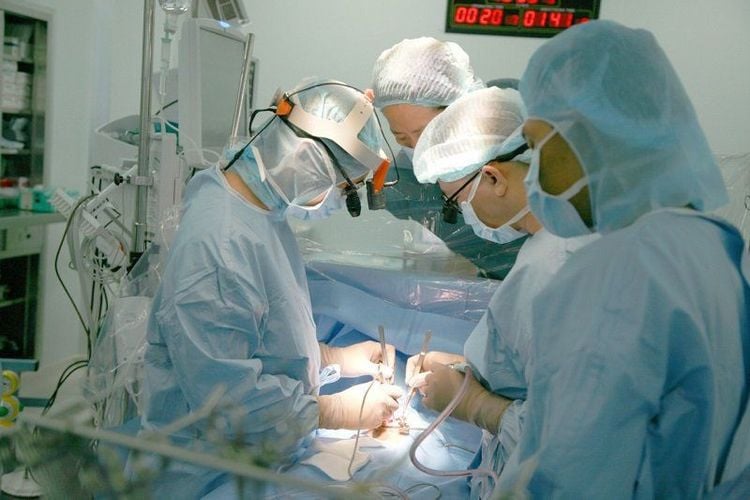This is an automatically translated article.
The article was professionally consulted by Specialist Doctor I Nguyen Xuan Tinh - Anesthesiologist - Resuscitation - Department of General Surgery - Vinmec Phu Quoc International General Hospital. The doctor has more than 18 years of experience studying and working in the field of Anesthesia - Resuscitation.Anesthesia is an anesthetic method that uses chemical or physical agents that temporarily inhibit nerve impulse conduction to insulate pain in a certain area of the body.
1. What is anesthesia?
The doctor uses local anesthetic to inject and suppress pain. All minor surgery cases are applied with local anesthesia. Because of local anesthesia, the patient was completely awake during surgery.Anesthesia is divided into two methods: local anesthesia and regional anesthesia.
Local anesthetic is to make a small area no longer feel pain. Local anesthesia is applied to small surgical areas such as a shallow, small, skin wound, scalp wound, finger or toe wound, etc. Regional anesthesia is the numbing of a large body area. than. The technician or doctor will inject anesthetic around a large nerve or into the spinal cord. With regional anesthesia one can block a peripheral nerve by injecting local anesthetic near the nerve or a group of nerves and the corresponding area of these nerves will be numb. Nerve blockade is commonly used as an anesthetic for surgery in the arms, forearms and hands, thighs, legs, feet, or face. Regional anesthesia is an injection of anesthetic into the spinal cord or epidural. An anesthetic is injected into the spinal cord and the corresponding nerve roots. Regional numbness causes loss of sensation in a large area of the body, such as the abdomen, back, or legs or arms.
2. When should anesthesia be performed?

The patient will be numbed before performing minor surgery, such as:
Filling or removing wisdom teeth Minor skin surgery, such as burning out moles and warts Biopsy, taking tissue samples for careful investigation than under the microscope. Sometimes, anesthesia is also used for larger surgeries such as certain types of brain surgery.
3. Pioneer in the field of anesthesia and pain relief
In the field of analgesia, Vinmec is notable for being a pioneer with special innovations – typically the epidural plane (ESP) analgesia technique for comprehensive pain relief, withdrawal, and pain relief. Short active recovery time, no complications, eliminating the risk of postoperative pain.When applying ESP, Vinmec has brought a painless surgical experience to heart surgery patients for nearly 2 years and many other surgeries, helping patients overcome the "major surgery" smoothly without any pain. pain.
Patients can exercise early, shorten hospital stay. Positive results at Vinmec have opened up the prospect of applying this anesthetic method in many open-heart surgeries, thoracic surgery and thoracic injuries with rib fractures.

In addition to anesthesia of the lumbar squamous muscles under ultrasound guidance, in Obstetrics and Gynecology, Vinmec also implements the technique of pudendal neuroanaesthesia (spinal anesthesia, epidural anesthesia), helping pregnant women experience a safe birth. the most comfortable way, whether it's a vaginal birth or a cesarean section. Thanks to these measures, mothers giving birth at Vinmec can enjoy complete pain relief, quick recovery, early return of bowel movements, early exercise and walking, and no chronic pain.
The positive effects from the ultrasound-guided anesthetic technique have been replicated and applied by Vinmec to other types of surgery, helping to shorten the recovery time, significantly reduce the mortality rate in surgery, improve the quality of life for patients. This is also the trend that the anesthesiology industry around the world is heading towards.
Please dial HOTLINE for more information or register for an appointment HERE. Download MyVinmec app to make appointments faster and to manage your bookings easily.














